April 2025
I love Shenzhen.
The city sparkles with energy. It’s fast, intense, and you feel it the moment you arrive. My local friends, who took me out to restaurants and helped me hunt for apartments, kept repeating Shenzhen speed like a running joke—but it wasn’t a joke. You see it everywhere. The pace of the people, the pace of the city, the pace of everything. It’s China’s Silicon Valley. Delivery robots in hotels, autonomous cars on the streets, drones above you, new tech popping up on every corner. It’s energizing. It’s innovation at full throttle.
The Yellow Storm
You might think Shanghai’s Meituan riders are aggressive—ignoring red lights, merging into sidewalks, squeezing through 10 cm gaps at 60 km/h. Cute. In Shenzhen, they take it personally. You’re not just a pedestrian—you’re an obstacle to efficiency. I genuinely feared for my life every time I crossed the street.
From above, I imagine Shenzhen looks like a moving sand dune. But it’s not made of grains of sand—it’s made of Meituan riders, swarming through the city in yellow, shifting and flowing with the rhythm of the streets. On a short stroll around my hotel, I counted dozens of yellow-jacketed riders in under ten minutes.
I haven’t really followed JD’s food delivery developments recently—partly because, as I’ve written before, it always seemed more like a defensive move than a serious long-term strategy. Maybe it was just meant to slow down Meituan’s advance in instant retail. That said, I’ve heard some recent chatter suggesting JD is now taking it more seriously, so I’ll need to look into it and I report back to you.
But I still don’t know where they’re actually operating. It’s definitely not Shanghai, and seemingly not Shenzhen either—unless you count the one JD food delivery rider I spotted there. One. Exactly one. The first I’ve ever seen in the wild. Shanghai’s count remains at zero.
I’d argue Meituan has the highest real-world visibility of any Chinese tech company. In first-tier cities, it’s nearly impossible to step outside without encountering some sign of its presence—delivery riders, bikes, portable phone chargers. You can’t walk a full minute without a visual reminder that Meituan owns a massive share of consumer mind. And it’s not just on the streets. Sit down in any restaurant, and you’ll likely end up scanning a Dianping QR code—another reminder that Meituan is everywhere, fully embedded in daily life.
The Innovation Zone
The skyline is packed with the giants of Chinese tech. You’ve got the old guard Tencent. Tencent just wrapped up its new headquarters in Qianhai, which, according to real estate agents, has already started dragging down property prices around their existing HQ in Binhai. (Apologies for the blurry photo—turns out the iPhone still hasn’t figured out night.) The message is clear: Tencent doesn’t just move markets. It moves real estate prices too—downward, in this case.
Ping An is there too, along with the usual suspects. But what makes it really exciting is the mix—you get the heavyweights, and right next to them, the newcomers.
Take Pony.ai—they just got the license to charge for their autonomous ride-hailing service in Nanshan. I use it regularly. It’s cheap, fully driverless, and so smooth it feels like no human was ever involved, which is kind of the point.
Then there’s DJI, sending drones into the sky, and Mindray, making high-end medical tech just down the street. The whole area feels like it’s always under construction—new buildings going up, new companies moving in, new ideas getting built.
A Day in Hong Kong: Speed Limits Apply
I took a quick detour to Hong Kong to open a bank account—a convenient one-hour taxi ride from Shenzhen. A beautiful city, always a pleasure to visit. But let’s just say Shenzhen speed didn’t make it across the border. HSBC, for example, seems to have adopted German speed—or dare I say, something even slower.
Opening a business bank account in Hong Kong was an experience. Bureaucracy, forms, procedures—none of it intuitive. We were sent to three different branches before finally landing at the one that actually understood what we wanted. It’s a business bank account, stupid! In China, I’d be done in thirty minutes. In Hong Kong, it took the better part of a day and a surprisingly intense—though thankfully short-lived—midlife crisis.
At one point, I seriously considered buying an expensive car just to cope.
Speaking of Hong Kong cars…
The Revival of the Zombie Cars
Crossing into Hong Kong also brought another surprise: the cars. Shiny new Japanese and German cars everywhere—Lexus, Nissan, Toyota, BMW, Mercedes-Benz. Most of these models never even made it to the Chinese market. Not because they’re bad, but because they’re simply not price competitive.
In China, the switch to local EVs is nearly complete. I knew that already—but it really hit me the moment I crossed the border. The contrast is striking. While Hong Kong still clings to its luxury imports, mainland cities have fully embraced the new generation of Chinese car brands.
You see it most clearly in the shopping malls. The first floor—once home to cafés or cosmetic counters—is now permanently colonized by EV showrooms. Malls feel like auto expos with food courts upstairs.
Shopping vs. Snacking
My wife once said the difference between people in Hong Kong and people in mainland China is simple: Hong Kongers like to shop, mainlanders like to eat. And every time I visit, it feels spot on.
In Shenzhen, the jewelry stores sit empty, their salespeople scrolling on phones. Meanwhile, just around the corner, there’s a queue snaking out the door of a local bread and cake shop. People are willing to wait 20 minutes for a bun. Why? I genuinely don’t know. My mind can’t comprehend this.
Conclusion
If you ever get the chance, come to Shenzhen. Seriously. In these times of trade wars, tech bans, and shouting matches across oceans, it’s easy to believe the world is splitting in two. But when you’re actually here—standing in line for freshly baked buns, dodging autonomous delivery bots, or sharing a meal with someone who just helped you find an apartment—you start to realize something: the gap isn’t as wide as the headlines make it seem.
Most things can be worked out. Preferably over good food, insanely fast delivered.
Other articles that might interest you!

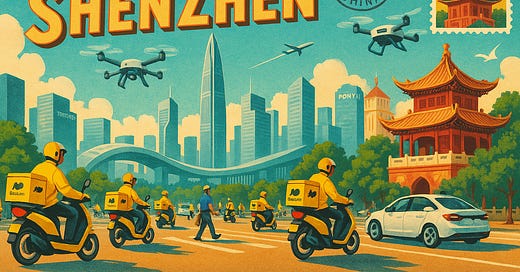


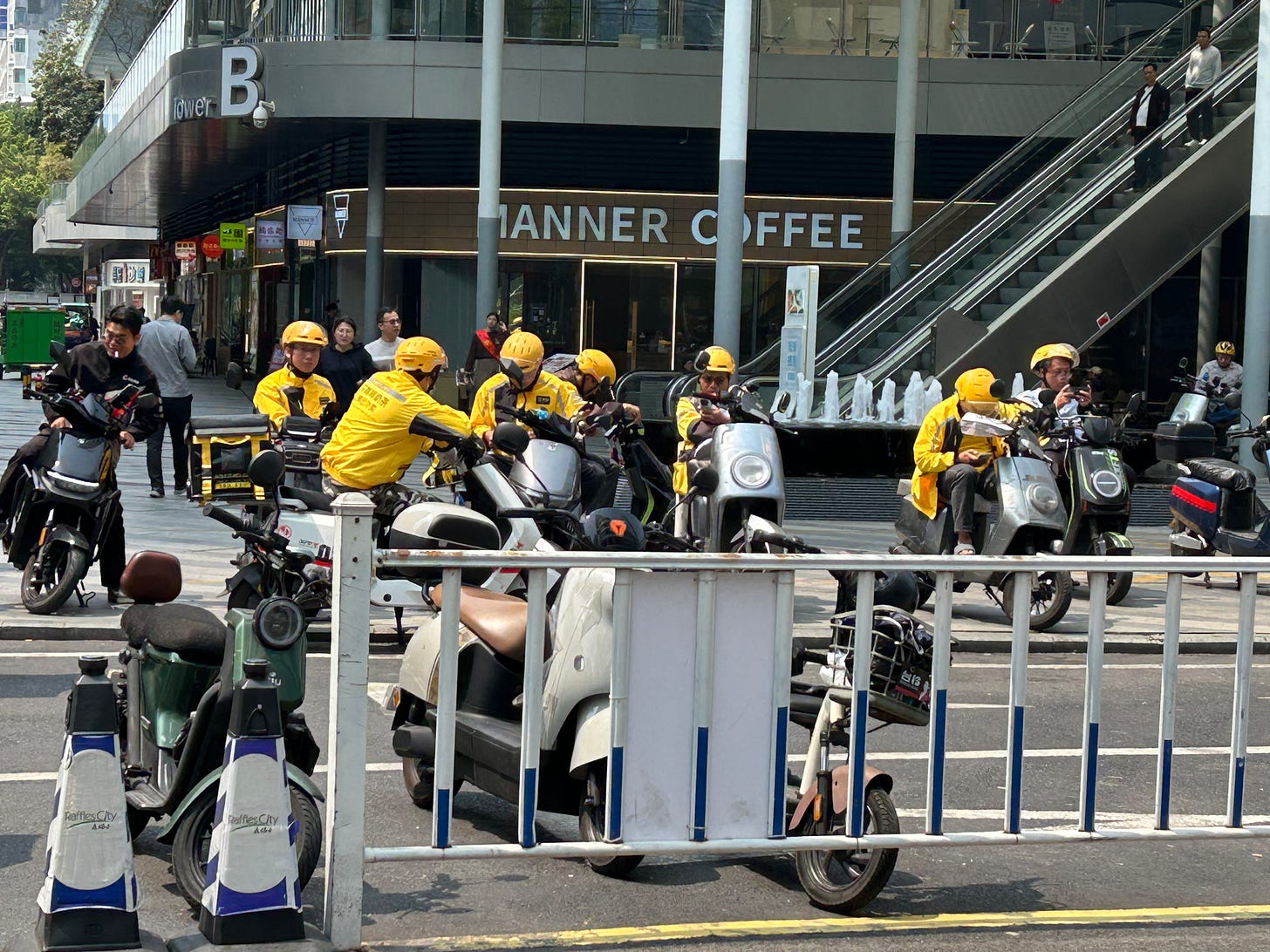
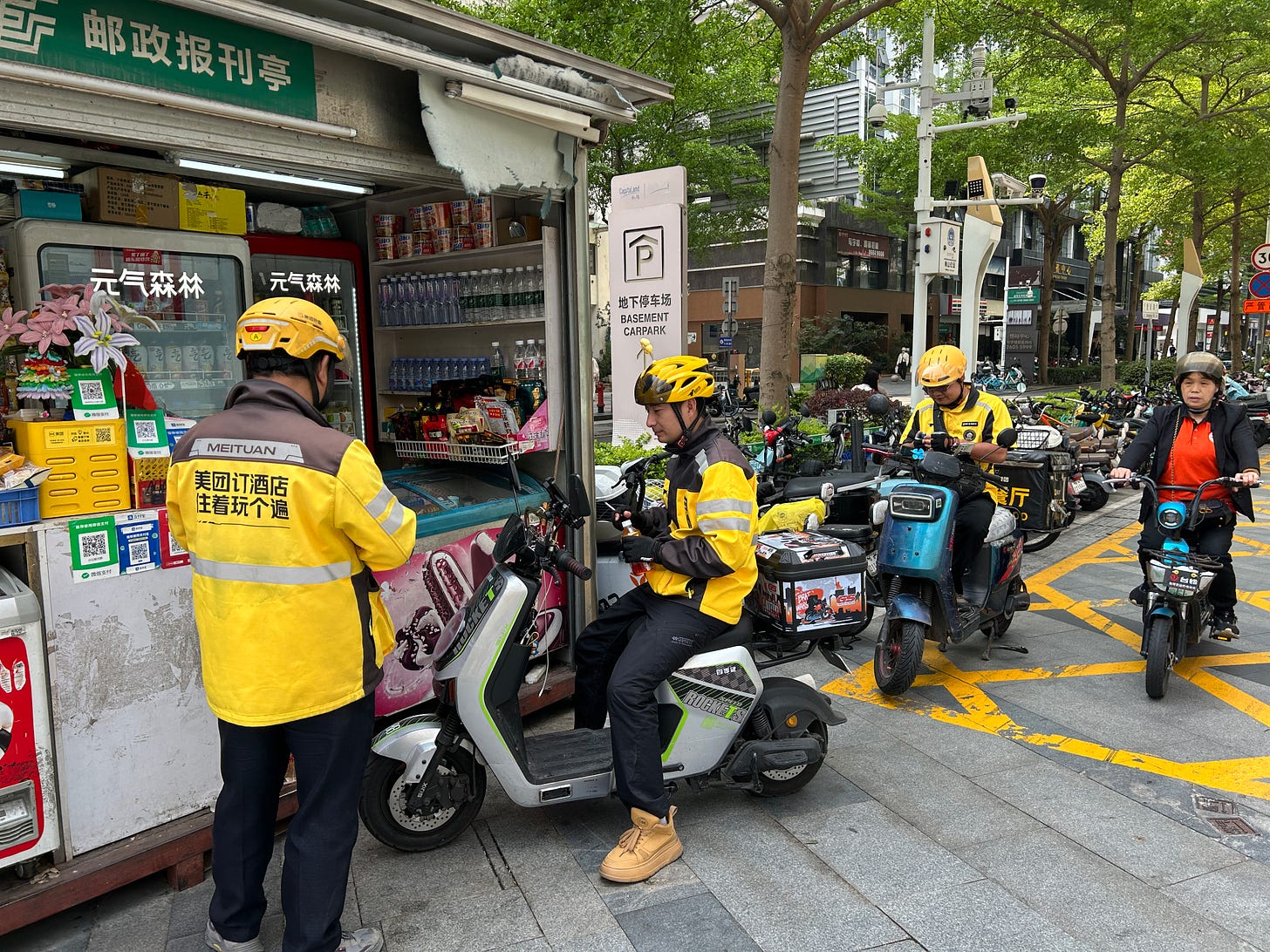
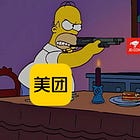
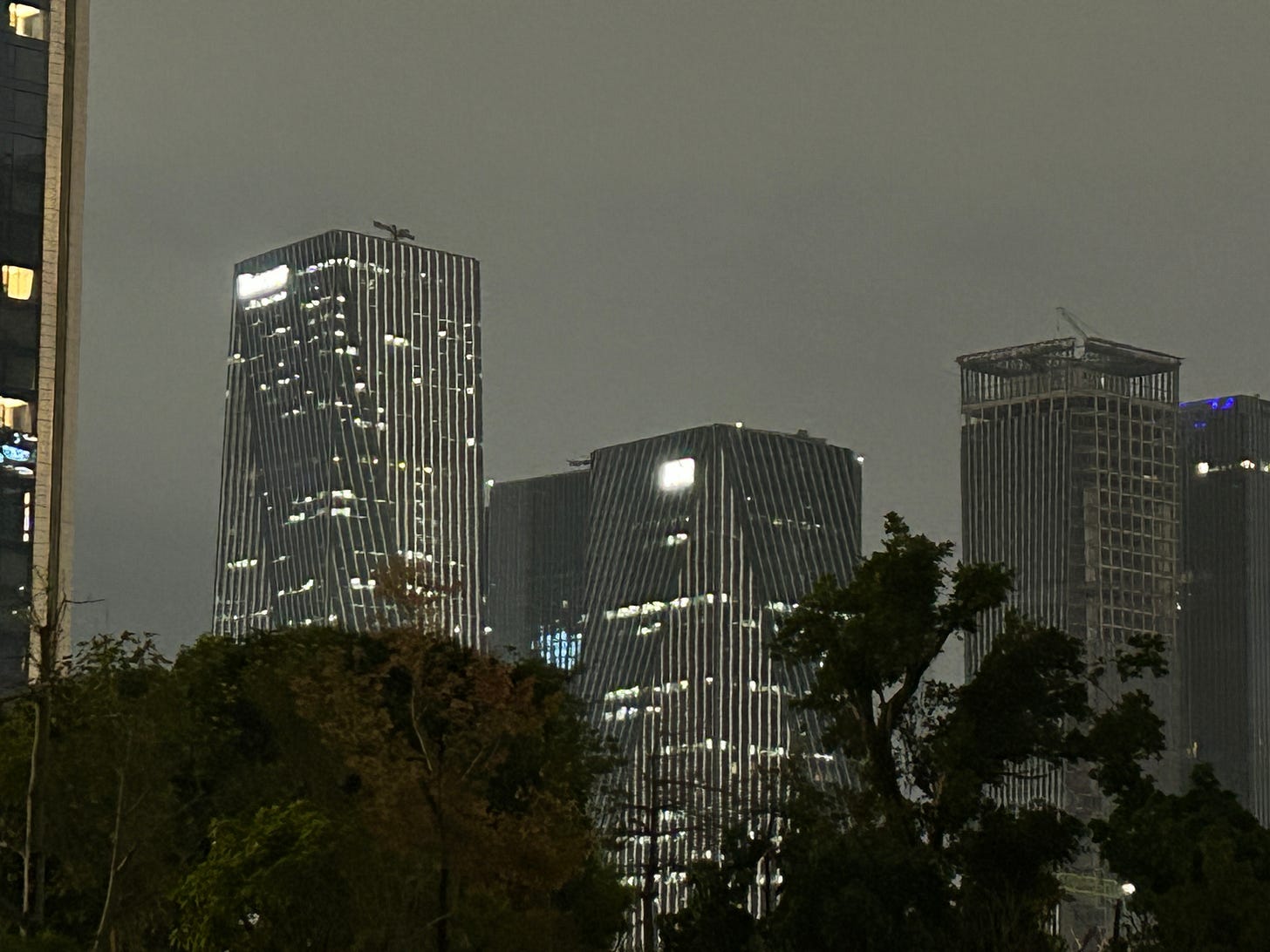
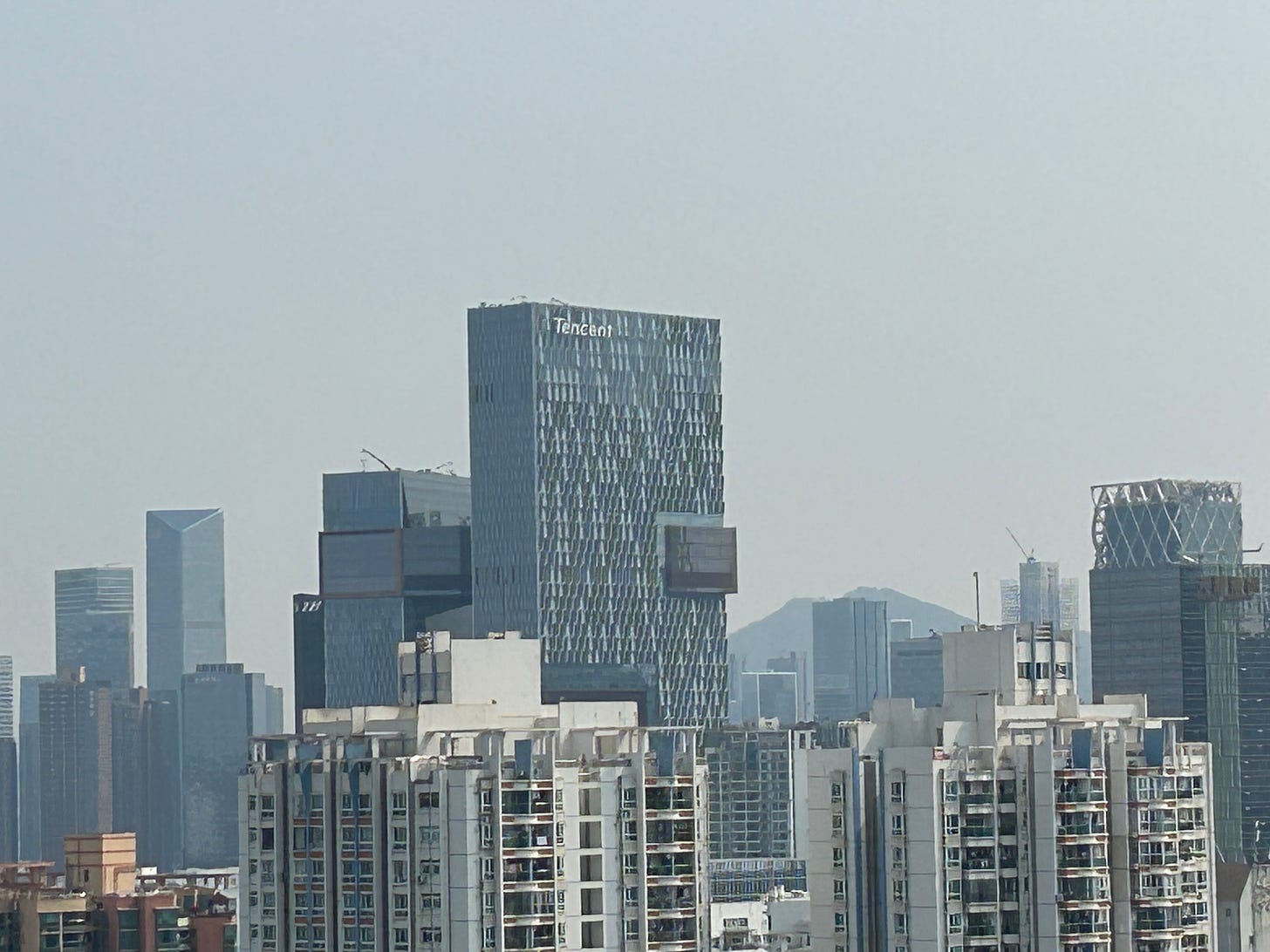
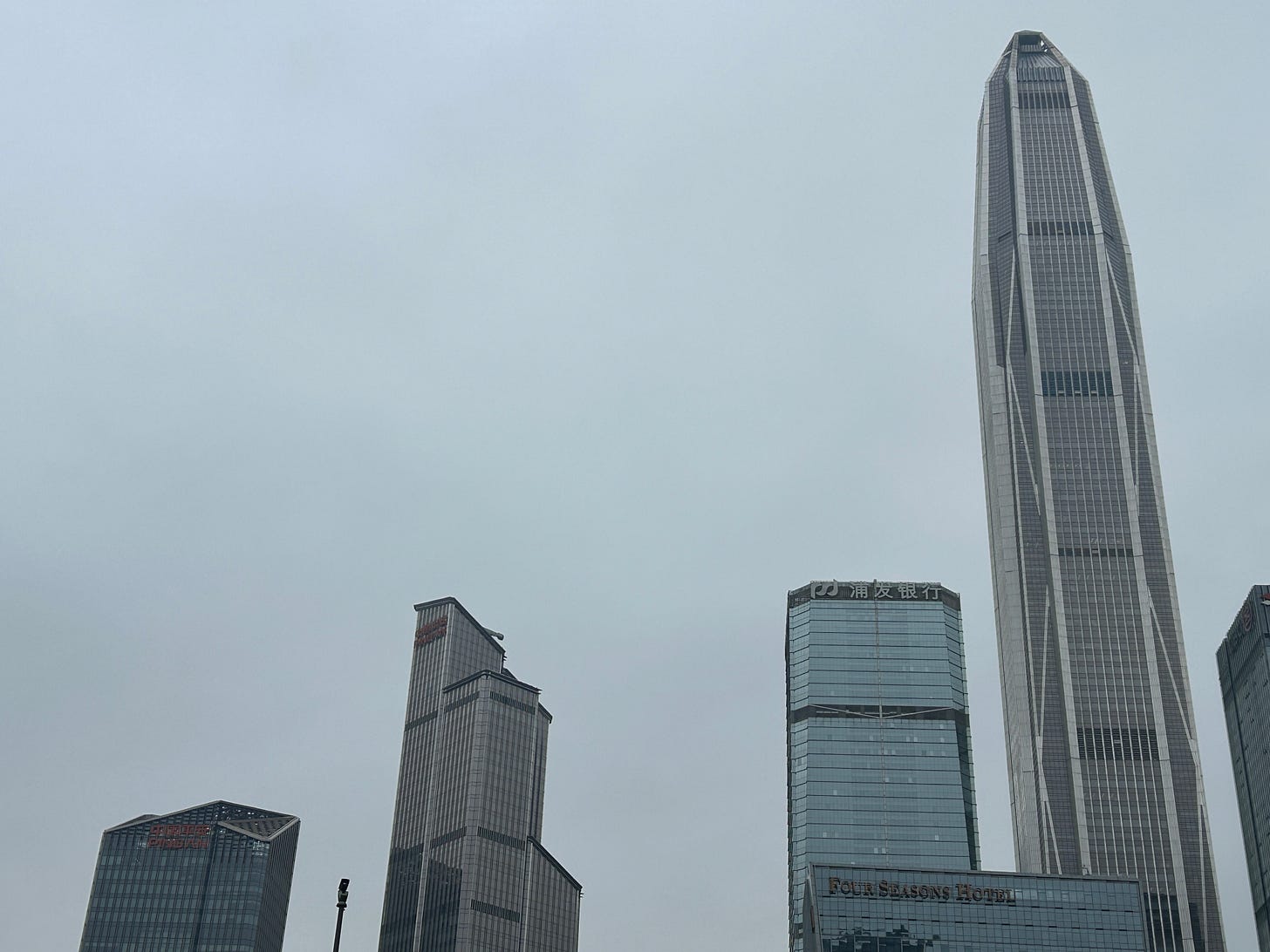
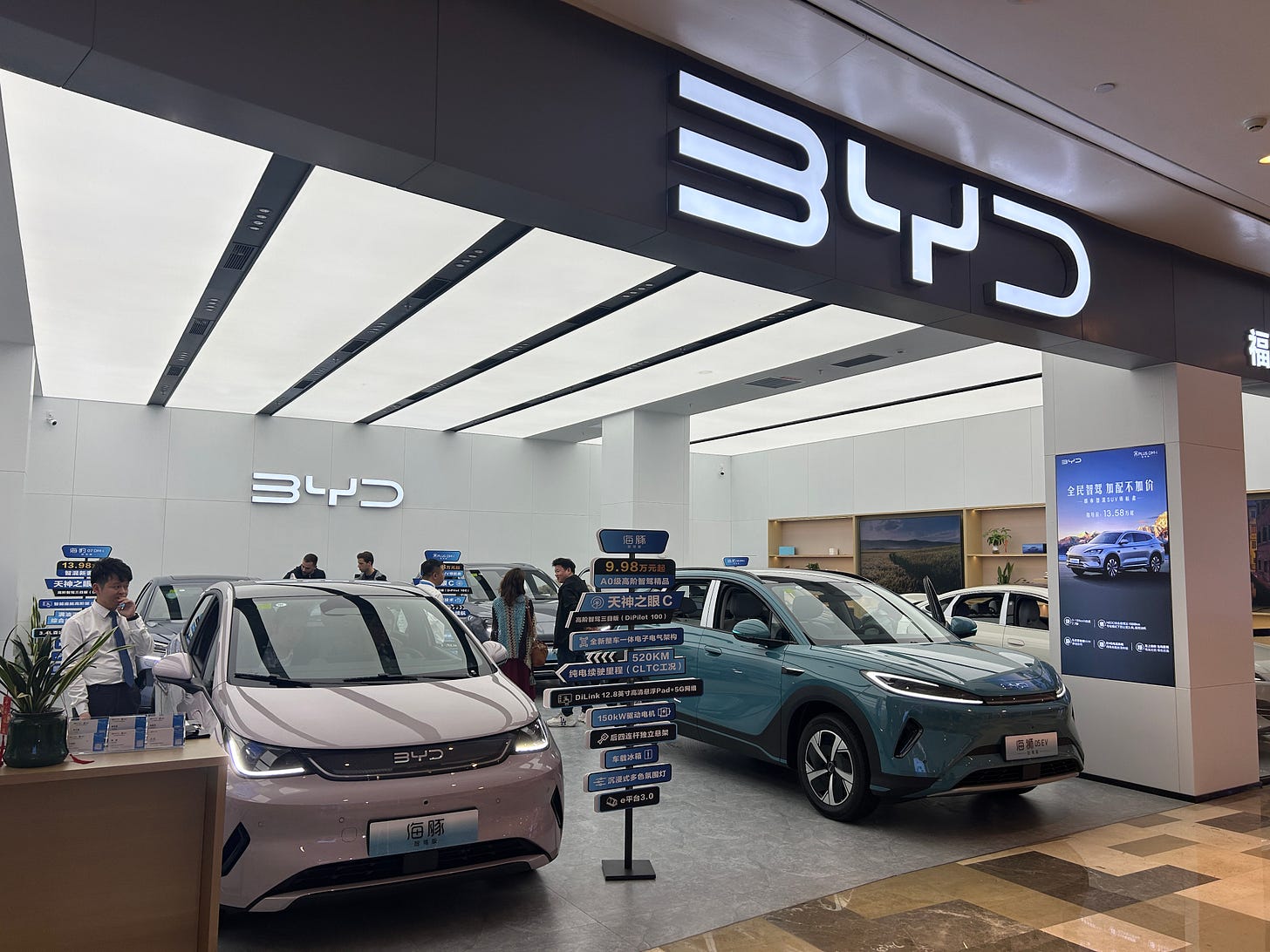
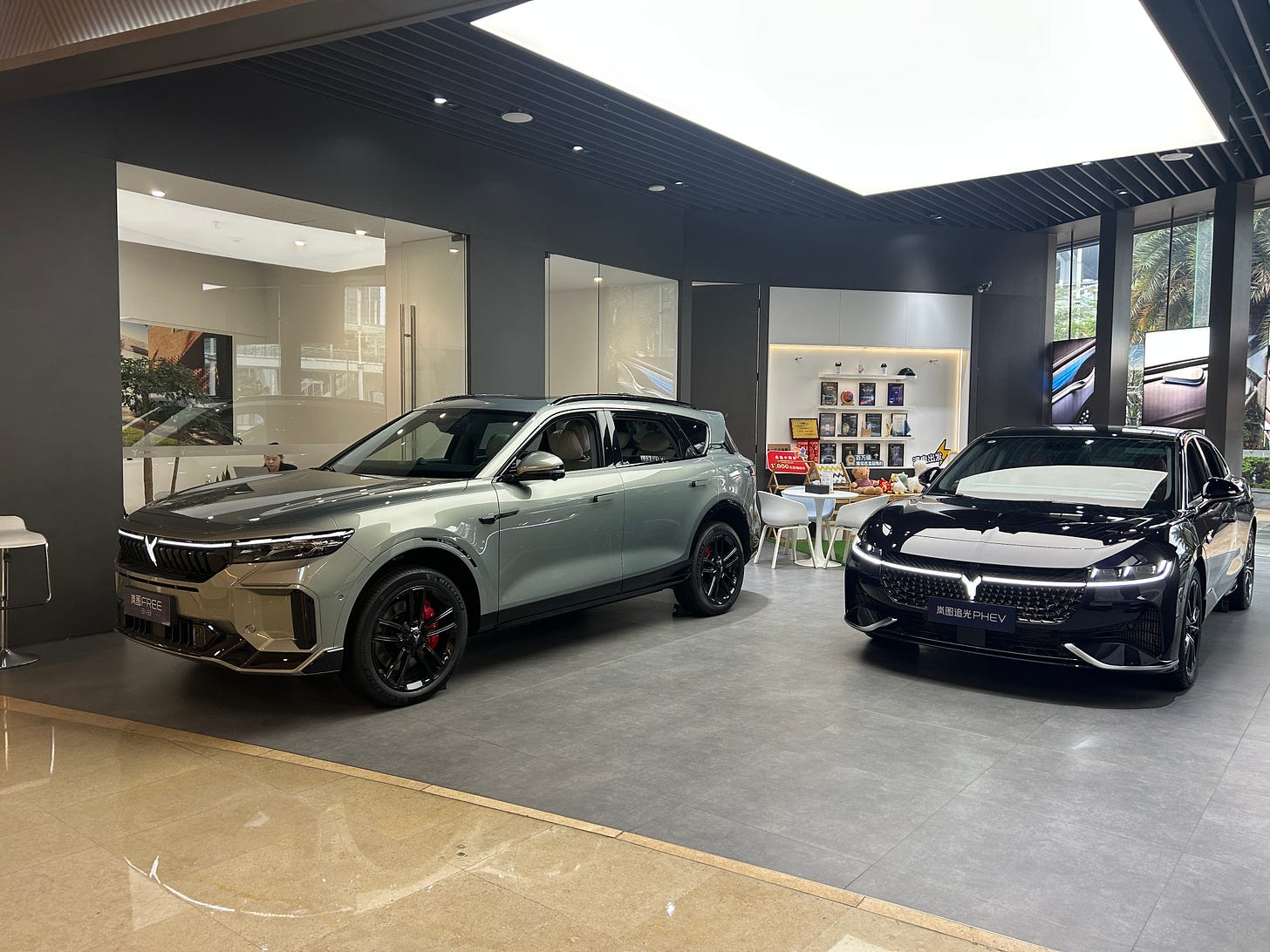
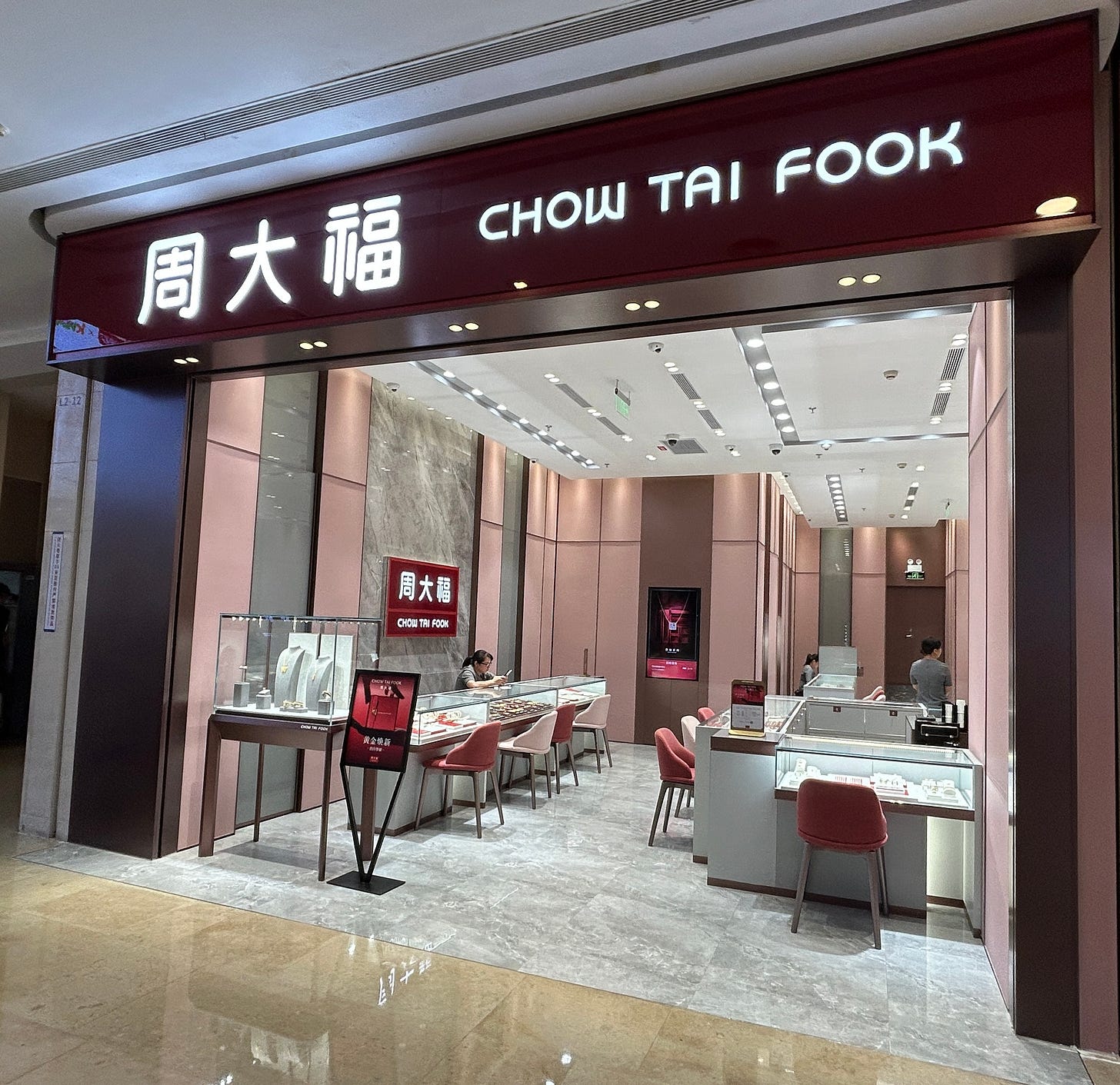
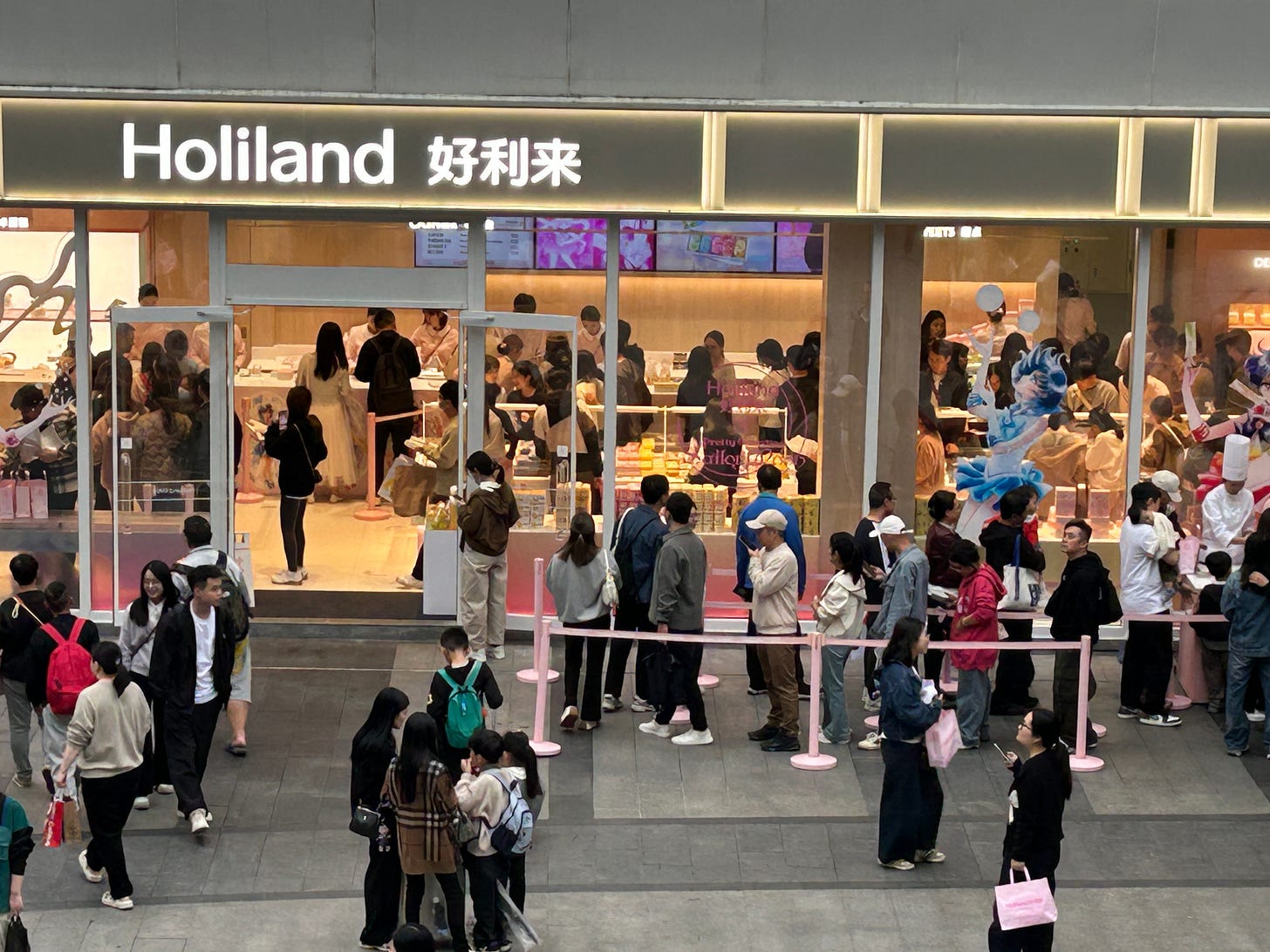



Great article. I missed my opportunity to visit Shenzhen the last time I was in Hong Kong. It is on my to-do list for the next trip.
"Crossing into Hong Kong also brought another surprise: the cars. Shiny new Japanese and German cars everywhere—Lexus, Nissan, Toyota, BMW, Mercedes-Benz."
Among HKers, Chinese cars don't yet have the same cachet as Japanese and German brands, though that will likely change over time.